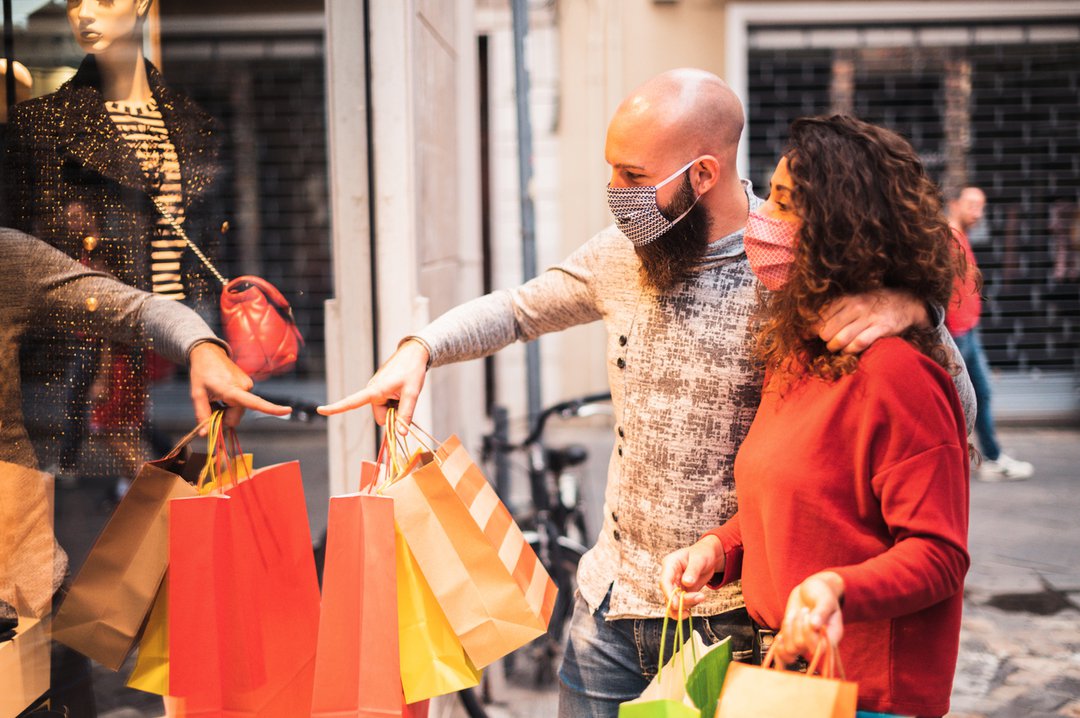
ROMA LUCIW
April 24, 2021
My first pandemic splurge was a Vitamix. Last August, when the refund for our cancelled flights landed in my bank account, I bought one for my husband’s birthday.
Turns out homemade fruit smoothies are as delicious as store-bought ones. Purees and soups are silky smooth and above all, it breaks up the tedium of making meal after endless meal at home.
Now, more than a year into the pandemic, my list of splurges has grown: Yes, I absolutely needed a new espresso machine because sometimes, that coffee is the highlight of my day. A long, warm, down parka – I mean, what non-dog-owner has ever walked this much before? Some comfortable seamless underwear and wireless bras – why did I wait this long?

These purchases may seem self-indulgent, but as The Globe’s personal finance editor, let me assure you that managing my money is incredibly important to me. I never buy something on a credit card if I don’t already have that money sitting in my bank account. And I’ve seen first hand the long-term damage buying things one can’t afford can do to one’s financial health.
And these days, the state of people’s finances runs the gamut. Even with my recent purchases, I’ve been fortunate to be able to save. I’m not spending on travel, not paying for gasoline, work clothes, makeup or haircuts, not going to gyms, restaurants or concerts, not paying for swimming, soccer lessons or camps for the kids.
I’m not alone. Stay-at-home measures brought about by COVID-19 mean Canadians fortunate enough to be employed have built up their savings. For others, the pandemic has led to devastating job losses, reduced income, failed businesses. Government supports have helped but many people are struggling.
Above all, the pandemic has made us aware of how fragile our financial health is. How much we depend on things going right – and how little we’ve planned for when things go wrong.
Over the years, I’ve edited plenty of stories about how indebted Canadian households were before the pandemic, with money consistently coming up as a top stress, alongside work, relationships and health.
And as we look forward to a post-pandemic world, I’m wondering if we will emerge from this period a little changed. Will COVID-19 have any long-lasting impact on our future spending and saving habits? Or will the estimated $200-billion some of us have been fortunate to stash in various bank accounts vanish in a pent-up frenzy of spending?
One theory out there is that just like after the 1918 flu pandemic, Canada is headed for a period of excess, innovation and yes, wasteful spending, similar to the Roaring Twenties.
I’m under no illusion. After extended periods of lockdown and social distancing, I realize people are itching to get back out there, to booking flights, going to restaurants and concerts, visiting family and friends. Believe me, I’m counting the days.
What I hope is that COVID-19 serves as a reset for our personal finances. That we come out of this dark period of anxiety and austerity having learned a few financial lessons. And that these lessons stick.
Because wouldn’t it be great if we made empowered, informed choices with our banking, investing, savings and borrowing. Imagine if money was a source of security and happiness, as opposed to stress.
To that end, here are my top five money tips for women as we inch toward a post-pandemic future where we can hug our grandparents, travel, shop and safely get a pedicure. (I could really use a pedicure.)
- Make sure you have an emergency, contingency, a life happens fund, whatever you want to call it. If there’s one big takeaway from 2020 it’s that everyone should have cash to fall back on if they lose their job, their car breaks down, their pet need surgery, their health deteriorates. Not a credit card, not a home equity line of credit. I’m talking about two, three, up to six months worth of living expenses sitting safely in a high-interest savings account. Imagine how soothing it will feel to know that money is there if you need it.
- Don’t overpay for a home. Major financial problems often start this way. House prices are skyrocketing and if you’ve calculated what you can afford to pay – and still live the life you want – resist the urge to pay more. The pandemic has made cheaper cities and remote work possible. There’s no shame in renting. And there’s nothing worse than being house poor: It can limit your ability to travel, change jobs, have kids or retire.
- Start investing. Women live longer and earn less than men, on average. As COVID-19 has shown us, we’re more likely to pause our careers to raise kids and care for elderly parents, which means we accumulate less wealth over a lifetime. It’s important for women to start investing for their medium and long-term goals. Find an adviser or educate yourself. Draw up a life and retirement plan. Adjust it accordingly. As long as you’re in it for 10 years or more, ignore the ups and downs of the stock market and watch your wealth build.
- Fear of missing out is real, so be aware. Before the pandemic, social media feeds were endless loops of decadent dinners, adventurous holidays and sparkling renovations. Some of those posts hid darker realities of people overspending, living paycheque to paycheque or taking on debt. When the pandemic ends, remember that all this fabulousness costs money and if social media triggers you to spend on things you can’t afford or don’t really need, try to cut down the amount of time you spend on Instagram, Facebook or Snapchat.
- Automate your finances. I honestly want to shout this from rooftops. This is one of the easiest and smartest things you can do. It removes the stress from budgeting, something most people hate. Every time you get paid, get money automatically transferred into savings, spending and an investment account. You can have an account for bill payments, for rent or mortgage, for self-care, whatever you want. Since last March, I’ve been funneling money into an account earmarked for a dream trip to Japan I’ll be taking with my family when COVID-19 finally ends. It will feel good to pay for that in cash.
This Globe and Mail article was legally licensed by AdvisorStream.
© Copyright 2025 The Globe and Mail Inc. All rights reserved.


